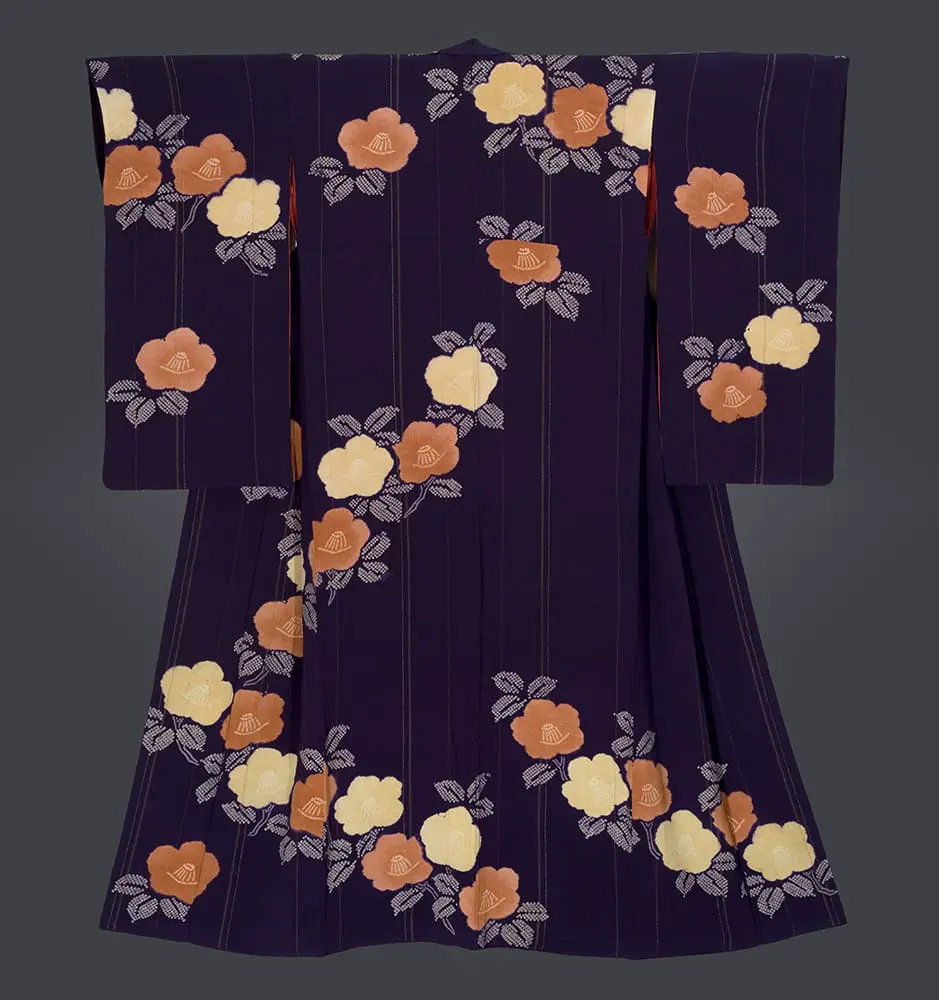This chirimen silk kimono exemplifies the sophisticated interplay between traditional Japanese resist-dyeing techniques and the emerging modernist aesthetic sensibilities of the Taishō and early Shōwa periods. The shibori technique, visible in the intricate tie-dyed circular patterns that form the camellia leaves and stems, demonstrates a masterful control of the resist process that creates organic, cloud-like textures within each motif. This approach echoes the broader Arts and Crafts movement's emphasis on handcraft virtuosity, while the overall composition reflects a distinctly Japanese interpretation of Art Deco's streamlined elegance.
The design philosophy reveals a sophisticated understanding of negative space and asymmetrical balance characteristic of Japanese aesthetics, yet the bold scale and rhythmic repetition of the camellia motifs suggest influence from contemporary Western decorative arts. The flowers themselves—rendered in warm yellow and russet tones—appear to float against the deep purple ground in a manner that recalls both traditional Japanese painting's use of void space and the modernist tendency toward abstraction. The metallic thread accents create vertical linear elements that provide structural coherence to the composition while adding a luxurious dimensionality that catches and reflects light as the wearer moves.
The detail images reveal the remarkable technical achievement of the shibori process, where tiny bound circles create a stippled texture that gives depth and movement to what might otherwise be flat color fields. This technique transforms the textile surface into something almost pointillistic, where individual dots of resist-dyed pattern coalesce into larger floral forms when viewed from a distance.
It measures 49 inches (124 cm) from sleeve-end to sleeve-end and 59 inches (150 cm) in height.
This artwork is featured on page 239 of Art Kimono: Aesthetic Revelations of Japan, 1905-1960. This book, published by Yorke Antique Textiles, can be previewed or purchased on our website here.
.avif)







